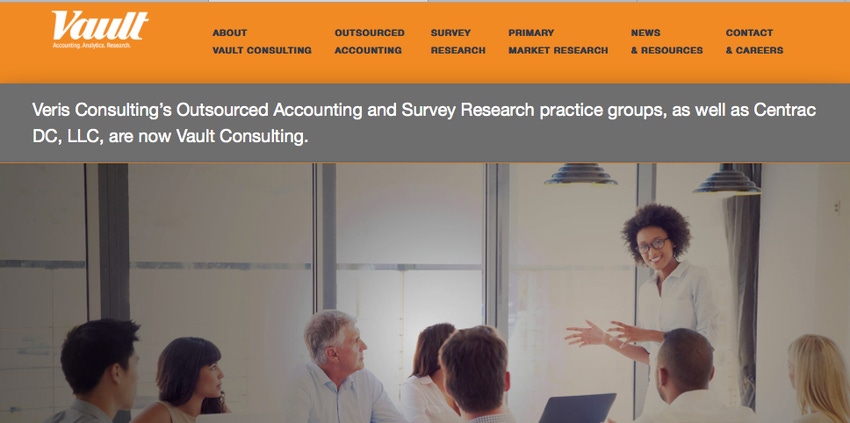Vault Consulting Leverages Big Data to Help Non Profits
Viewed one way, Vault Consulting looks like a data and business analytics specialist with a technology underpinning of web designers and .Net developers. Viewed another, it sort of looks like an IT consultancy with a big data practice. Welcome to the new channel.
March 24, 2016

Some companies launch into the channel with great fanfare; others wander into it quite unexpectedly.
Reston, Va.-based Vault Consulting falls into the latter camp. In Chicago this week, Vault’s Principal and Managing Director, Toby Palmer, shared his company’s somewhat circuitous route to the channel, providing a glimpse at how consulting companies are building lucrative practices around big data.
Palmer appeared on stage at CompTIA’s Annual Membership Meeting (AMM) during a session devoted to customer case studies. But before we get to that, here’s some background on the organization.
Earlier this year, a team of accountants and data specialists launched Vault, which was spun from Veris Consulting, a company that specializes in forensic accounting services. Vault’s focus is on outsourced accounting and full-service research programs. The company’s research arm helps associations, non-profits and their affiliates develop surveys and studies, field them, collect the data and put the information to use.
The company’s work with business intelligence and analytics technology puts it at the center of many of its customers’ functional departments, including their information technology, research and marketing business units. Though virtually everything it does revolves around advanced technology, the company insists that it is “not trying to sell IT,” which brings me back to Vault’s appearance at AMM this week in Chicago.
Tim Herbert, senior vice president of market research and intelligence at CompTIA, told MSPMentor that he invited the company, which has done some work for CompTIA, to present at AMM to give solution providers insights on how they might be able to put data to use, regardless of their business model. At AMM, Palmer showcased work the company did for a DC-area medical association. The association engaged Vault to modernize a research project that culminated in a major report that the association sold back to its members. In previous years, the report was always printed. Some editions, however, did not sell enough copies to cover the cost of production. So rededicating to produce the report each new year was always a bit of a crap shoot. What is more, the printed product severely constrained how the association could present its data.
Enter Vault, which recommended that the association retire its traditional printed report. In its place, Vault promised to create an interactive online solution that would present data and findings in new ways. While it mulled building a business intelligence platform for the association itself, Vault quickly realized that its existing business intelligence technology and analytic solutions would not work. So it decided to apply its development team to a third-party “white-label” intelligence application.
“We didn’t have a lot of money for the white-label partner, so we had to investigate a variety of economic options [to make the deal work], said Palmer. Instead of writing a big check for the technology, Vault negotiated a deal with the software company to enter into a revenue sharing agreement. The more reports it helped the association sell to its members, the greater remuneration for the white-label technology provider.
As for the association, Vault sold it on the promise that, after a one-time cost increase to produce the report, subsequent research reports would be significantly less expensive to produce. What is more, it promised that the technology would allow the association to put its data to use in ways that were previously impossible.
With demand for its services on the rise, the company is now trying to figure out how to position itself in the market. Viewed one way, the company looks like a data and business analytics specialist with a technology underpinning of web designers and .Net developers. Viewed another, it sort of looks like an IT consultancy with a big data practice. The idea that Vault finds itself at the forefront of the IT channel is somewhat puzzling to Palmer, who admits that he and his colleagues never thought of themselves at IT consultants.
“We are data specialists,” he said. But the idea of partnering with fellow IT solution providers and their customers appeals to him. One thing proving difficult, however, is talent acquisition. Vault inherited some web developers when its leadership team acquired a dot com startup in 2002. But since then, retaining software talent due to current climate of job-hopping has been a challenge. The company has augmented its staff with some foreign workers recruited under the H-1B visa program and with workers recruited from major job sites.
The net of the company’s experience is that companies are developing lucrative big data practices. As they do, they find themselves advising customers on technology purchase and implementation decisions. And because of that, they are giving new shape and dimension to the channel as we know it.
About the Author(s)
You May Also Like


